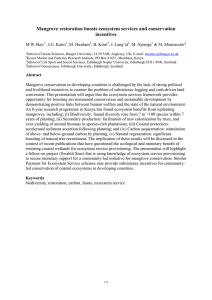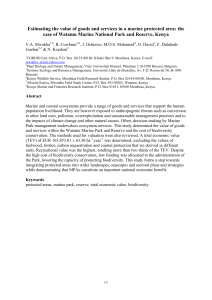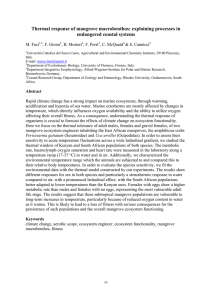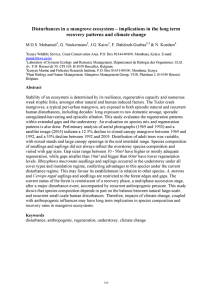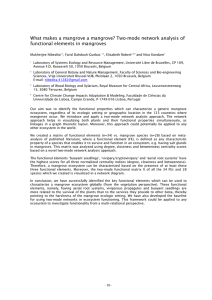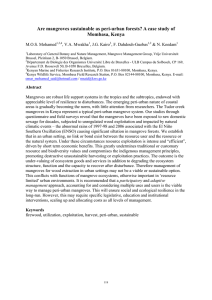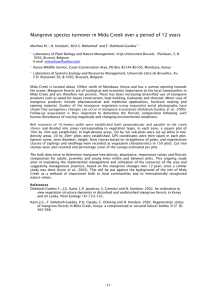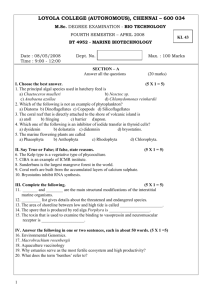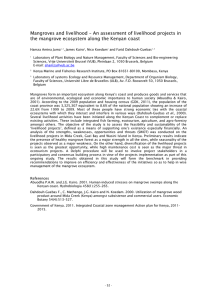WHO BENEFITS AND WHO LOOSES? ESTIMATING THE VALUE OF
advertisement
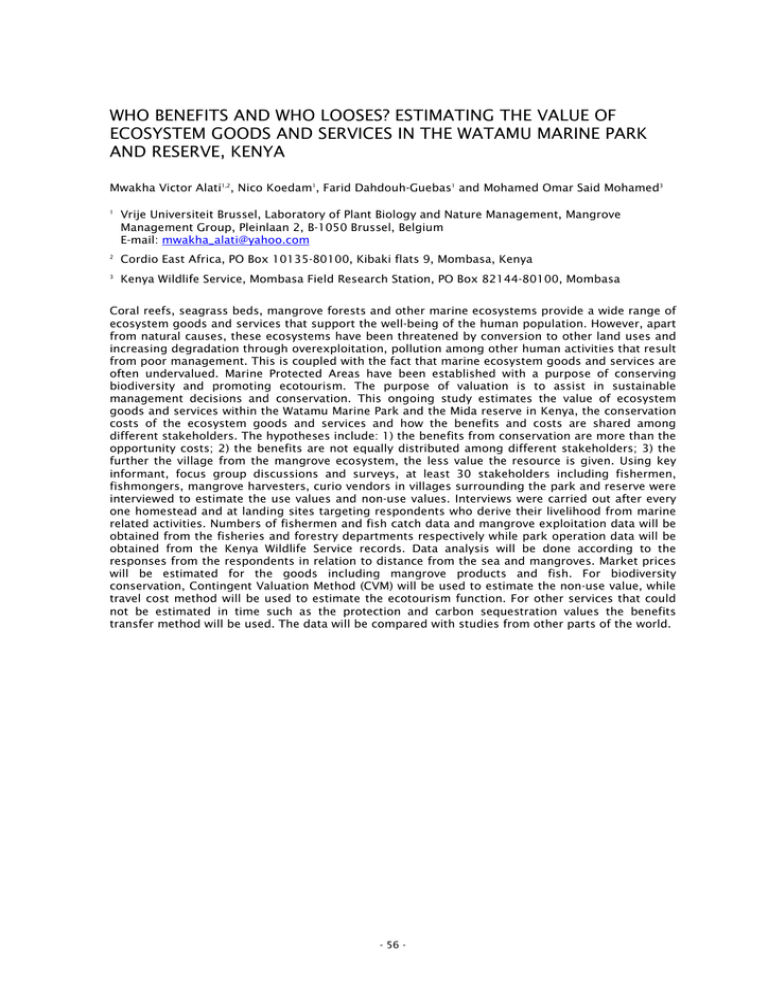
WHO BENEFITS AND WHO LOOSES? ESTIMATING THE VALUE OF ECOSYSTEM GOODS AND SERVICES IN THE WATAMU MARINE PARK AND RESERVE, KENYA Mwakha Victor Alati1,2, Nico Koedam1, Farid Dahdouh-Guebas1 and Mohamed Omar Said Mohamed3 1 Vrije Universiteit Brussel, Laboratory of Plant Biology and Nature Management, Mangrove Management Group, Pleinlaan 2, B-1050 Brussel, Belgium E-mail: mwakha_alati@yahoo.com 2 Cordio East Africa, PO Box 10135-80100, Kibaki flats 9, Mombasa, Kenya 3 Kenya Wildlife Service, Mombasa Field Research Station, PO Box 82144-80100, Mombasa Coral reefs, seagrass beds, mangrove forests and other marine ecosystems provide a wide range of ecosystem goods and services that support the well-being of the human population. However, apart from natural causes, these ecosystems have been threatened by conversion to other land uses and increasing degradation through overexploitation, pollution among other human activities that result from poor management. This is coupled with the fact that marine ecosystem goods and services are often undervalued. Marine Protected Areas have been established with a purpose of conserving biodiversity and promoting ecotourism. The purpose of valuation is to assist in sustainable management decisions and conservation. This ongoing study estimates the value of ecosystem goods and services within the Watamu Marine Park and the Mida reserve in Kenya, the conservation costs of the ecosystem goods and services and how the benefits and costs are shared among different stakeholders. The hypotheses include: 1) the benefits from conservation are more than the opportunity costs; 2) the benefits are not equally distributed among different stakeholders; 3) the further the village from the mangrove ecosystem, the less value the resource is given. Using key informant, focus group discussions and surveys, at least 30 stakeholders including fishermen, fishmongers, mangrove harvesters, curio vendors in villages surrounding the park and reserve were interviewed to estimate the use values and non-use values. Interviews were carried out after every one homestead and at landing sites targeting respondents who derive their livelihood from marine related activities. Numbers of fishermen and fish catch data and mangrove exploitation data will be obtained from the fisheries and forestry departments respectively while park operation data will be obtained from the Kenya Wildlife Service records. Data analysis will be done according to the responses from the respondents in relation to distance from the sea and mangroves. Market prices will be estimated for the goods including mangrove products and fish. For biodiversity conservation, Contingent Valuation Method (CVM) will be used to estimate the non-use value, while travel cost method will be used to estimate the ecotourism function. For other services that could not be estimated in time such as the protection and carbon sequestration values the benefits transfer method will be used. The data will be compared with studies from other parts of the world. - 56 -
